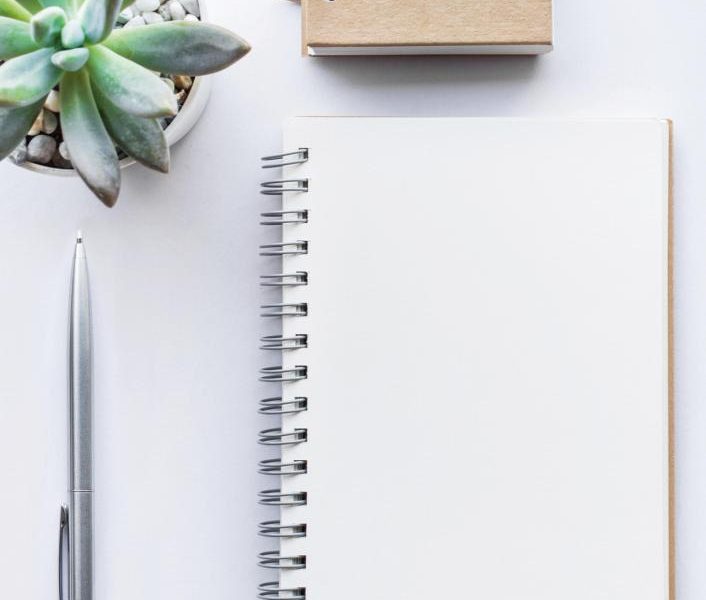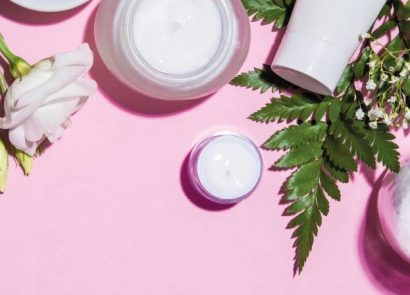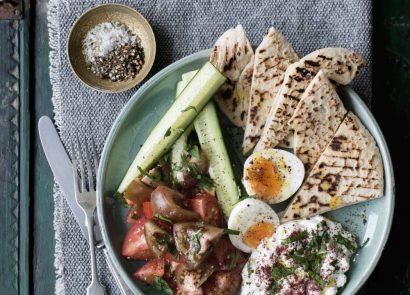There’s something cathartic about putting pen to paper. Don’t just take our word for it – research suggests that engaging in a creative activity, just once a day, can lead to a more positive state of mind. In fact, a study found that expressive writing, often associated with journaling, is considered to be therapeutic, with those writing about traumatic, stressful or emotional events being significantly less likely to get sick compared to their non-journaling counterparts. Another study found that art therapies have been found to alleviate anxiety, depression and stress, while increasing resilience and wellbeing. An arts-onprescription project (where people experiencing psychological distress are encouraged to engage with art) has shown a 37 percent drop in GP consultation rates and a 27 percent reduction in hospital admissions – proving the merits of getting creative. And, with the winter weather sending you running for the comfort of your sofa, there’s no better time to get cosy and channel your artistic side to help you wind down. We’ve rounded up three of the best ways to get creative and calm – all at the same time with the power of these creative writing exercises.
Calligraphy
What is it?
Calligraphy is a beautiful form of handwriting. “Derived from traditional calligraphy scripts, modern calligraphy in particular has become increasingly popular, with a flexible alphabet that can be adapted to suit your own style,” explains Katie Noakes, founder of London Calligraphy (londoncalligraphy.com). “You use a broad-tip instrument or brush to write with.”
Why try it?
“It requires patience and practice, and has therefore become a form of escape from our busy lives, and most importantly, a distraction from TV or phone screens,” adds Katie. “Calligraphy allows you to produce something beautiful that can be shared with others. Receiving just a few words beautifully presented on a note card gives the sense of something truly special. In a digital age where multi-tasking is encouraged, we rarely stop. Calligraphy practice takes you back to basics and requires your full attention and a slow pace. To form the lovely flourishes and smooth lines, you also need to relax and let go.”
The health benefits:
“Those who try calligraphy are surprised by how relaxed they feel, while also being delighted at how they have managed to write their own name so beautifully in such a short time frame. Progress can be seen in as little as 30 minutes practice, so it’s an incredibly rewarding hobby. Posture is also a big part of calligraphy – I teach my students to relax their shoulders, uncross their legs and become conscious of their posture throughout the classes. Many people pick up the pen for the first time and state how wobbly their lines are at the very start of the session. I tell them to bear with it, and by the end of their first page, the wobbles will have reduced. This is all down to relaxation.” In calligraphy classes, how to use a dip pen and ink are taught before moving on to finding your style.
Journaling
What is it?
“There’s much more to journaling than just writing down what you did that day, but that can be a great starting point for this beneficial daily practice,” explains Carina Lawson, founder of Ponderlily, which create environmentally-conscious planners for mindful living (ponderlily.com). “Keeping a journal can be such a positive addition to your life. Even the simple act of starting a gratitude journal, in which you record even the smallest thing to be grateful for each day, helps to give you a positive mindset.”
Why try it?
“There are so many reasons to take up journaling, just as there are so many uses for a journal. On the most basic level, having a record of your daily activities and feelings is a great resource when you’re a little frazzled and your memory is failing you. Many people look to their journals to impose some order on domestic chaos and to take back control of their lives. By listing and taking some quiet time with your thoughts, even the thorniest problem or biggest obstacle can be broken down and handled. Besides, couldn’t we all do with a few quiet minutes to ourselves each day? It’s the kind of casual routine that selfcare is based on.”
The health benefits:
“By looking specifically at the things you’re grateful for, you’re bringing a burst of positivity into your life every day, even on the really tough days. This in turn improves your mood and general sense of wellbeing. Organising your thoughts and concerns – and even your hopes and dreams – this way allows you to clear the mental clutter around them. Try writing down everything you’re thinking, and see the important parts rise up from the chatter. That feeling of focus can help you move forward with your goals. You’re also creating a memory book of sorts, something to look back on that will remind you of happy things, both great and small. That can be invaluable during times with a lot of change. Recording daily positive details tells a great story all by itself.”
Colouring
What is it?
“Putting pen or pencil to paper and colouring something in is old school and analogue,” says Johanna Basford, illustrator and author of the adult colouring book World of Flowers, (£12.99, Virgin Books). “Yes, there are colouring apps, but tapping away on a little screen will never be as comforting as the gentle glide of lead on page.”
Why try it?
“We were all born creative. It doesn’t matter if you can’t draw a stick man, when you were little and someone gave you a crayon, you drew. Unleashing that creative spark is so primitive. It’s what we as humans are meant to do – express ourselves! So, when we finally get out of our own way and allow ourselves to be creative, a very basic and core level of happiness can be felt. Colouring is an easy way to be creative. You don’t need expensive materials, you don’t need to attend a class, you don’t even need a lot of time. And if a blank canvas scares you, don’t panic! The outline is already there, all you need to do is bring the colour and the joy will follow!”
The health benefits:
“It’s a rare chance to unplug and really focus on one thing for a prolonged period of time. And this is what our brains were meant to do. We aren’t naturally multitaskers, we’re single taskers and there’s a certain sense of calm that can be reached when we finally allow ourselves to do just that.” Plus, there’s a great sense of nostalgia associated with colouring. “Colouring is a magical portal that will transport you back to the mindset of your childhood. Had a bad day? Put the laptop down and pick up some colouring pencils. You will be whisked back to those carefree days of your childhood when the biggest problem was wondering what to do with the white crayon. If adulting is hard, why fight it? Treat yourself to a little escapism.”




















